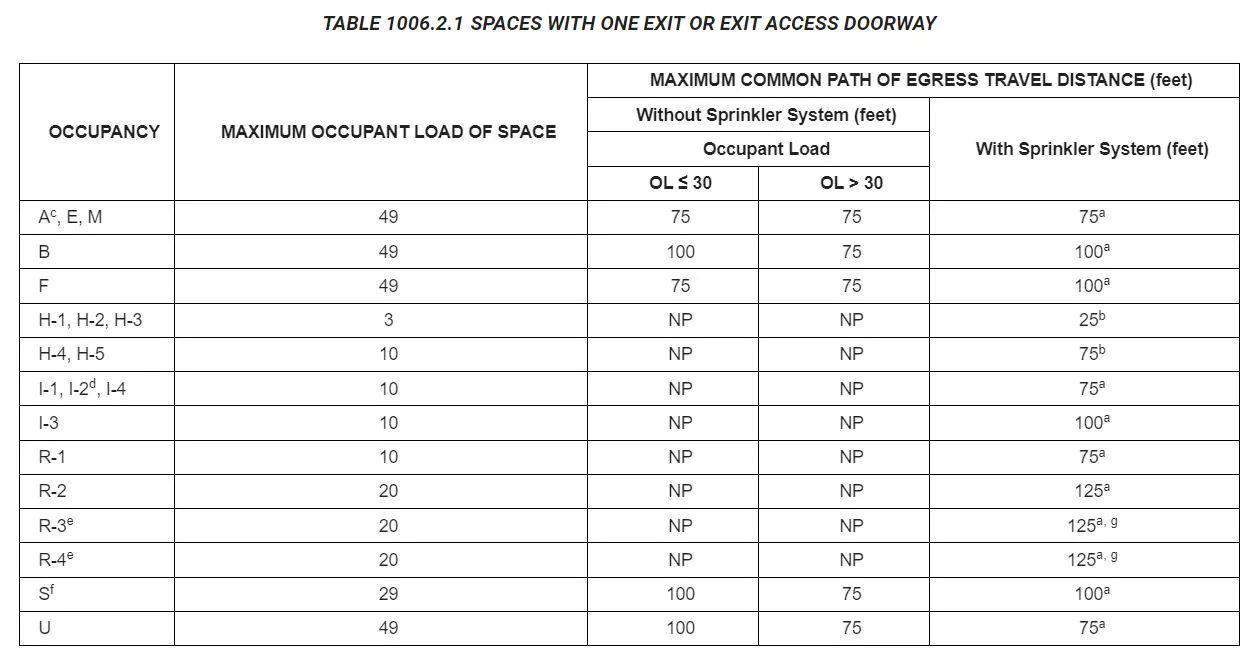The default for egress per the code is 2 exits out of spaces and stories, but the code does have several provisions permitting a single exit from a smaller spaces with limited number of occupants. Here will will go over the main concepts for single exit spaces and single exit stories.
Single Egress from spaces
A space or room within a story is limited to one exit primarily based on the number of occupants. This could be a single room, a few connected rooms, or just an area of a building. Assembly, Mercantile, Educational, Business, and Factory occupancies allow a space/ room of 49 occupants or less to be served by 1 exit. Other occupancies have lower numbers, with the lowest threshold being High Hazard occupancy at 3 occupants max for 1 exit.
The other deciding factor as to whether a space or room can be served by only 1 exit is common path of egress travel distances. This is the max distance that an occupant must travel before they reach an exit or two distinct paths towards 2 separate exits. It is essentially describing a dead end situation. So, even if you have a single exit room under the maxumum number of occupants, you still might night be able to have 1 exit based on the size/ length of the space.
For example, in a B occupancy, sprinklered building, the maximum common path distance is 100 ft. So, even if you were under the 49 maximum occupants for a single exit, if a far corner of the room or space was over 100 ft distance to a point where the occupant has an option for 2 exits (i.e. a corridor served by two exits), then that room would still need a 2nd exit out of it.
The chart below from the IBC is shows these occupant loads and common path distance maximum for space with one exit:

Single exits from stories
Single exits from stories are also based on occupant load. In 2015 and earlier IBC, it was also based on maximum common path distance. But, in 2021 and later codes, it is changes to a maximum exit access travel distance is the distance from the most remote point to an exit (i.e. an exit stairwell or exterior door at grade)
Many of the occupancies as you can see in the chart below have similar rules as the single exit rules from spaces.
But, when it comes to the 2nd floor, many more restrictions take place. Only B, F, M, and S occupancies are allowed to be on a 2nd level served by only 1 exit, its limited to 29 occupants maximum, and 75 ft travel distance. So, this is intended for smaller, low occupancy 2nd levels only. Third levels or higher are not permitted to be served by 1 exit at all.

Other regulations for single exits
There are several other situations in which single exits are regulated from spaces or stories, such as overall occupant load of story and special uses. R-2 occupancies also have their own chart like these.
These requirements and charts listed here are two of main situations that inform us as to whether or not a space, room, or story can be served by a single exit.